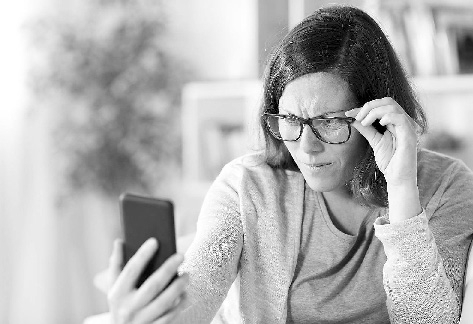
A NEW drug that could help the middle-aged and elderly read without glasses has been submitted to the U.S. Food and Drug Administration for approval. The investigational eye drop — called AGN-190584 — is expected to be approved by the end of this year, according to a statement released last week by Allergan Eye Care, an AbbVie company. The eye drops are a pilocarpine solution meant to treat the symptoms of presbyopia, an age-related condition that causes gradual loss of the eyes’ ability to focus on nearby objects, according to the Mayo Clinic. It’s a natural but annoying part of aging, said Robert S. Bailey, chief of the Cataract and Primary Eye Care Service at Wills Eye Hospital in Philadelphia. “It happens from (the age) of 10 and then you gradually lose that focusing ability to the age of 70 when you lose the ability totally,” he said. Most patients begin to notice it in their mid-40s. Presbyopia is caused by the loss of elasticity in the eyes’ lens, which makes it harder to change shape when it needs to shift focus from faraway objects to closer ones. The eye drops don’t treat the cause of presbyopia but help treat its symptoms. Instead of targeting the eyes’ lens, the drops make the eyes’ pupils smaller, creating a pinhole effect that increases the depth of focus. “If you have a camera and you make the aperture small (and) let little light in, the depth of focus — or the distance over which things are in focus — are much greater than if you open up the camera,” Bailey said. “It gives you greater depth of focus not just far away but closer as well.” The new drug application is based on two randomized trials of 750 participants ages 40 to 55 in which patients were treated either with the drug or with a placebo once a day for 30 days. The studies found the eye drops were safe and effective, with participants gaining three more lines on the reading chart in low light compared with those who received the placebo, according to trial results published by the company in October 2020. The eye drops began working as soon as 15 minutes after they were applied but reached their peak effectiveness after about an hour. Side effects that occurred in fewer than 5 percent of patients included headache, red eyes, blurred vision and some eye pain. If approved by the FDA, AGN-190584 would be the first eye drop that treats presbyopia. However, pilocarpine eye drops have already been approved at a higher concentration for glaucoma patients. Those patients use it about four times a day at 4 percent concentration; presbyopia patients may use it only once a day or on demand at 1.25 percent, said Michael Robinson, vice president and global therapeutic area head at AbbVie. Future trials will look at how the drug works when used more than once a day, he said. “In glaucoma, (pilocarpine) improves the outflow of fluid from the eye and that lowers the intraocular pressure,” he said. “Here (with presbyopia patients), we’re using pilocarpine to basically constrict the pupil.” That could make driving at night dangerous, but the FDA will determine warning labels after the drug is approved, Robinson said. Other warnings could include exercising caution while operating heavy machinery, especially in poor light.(SD-Agencies) | 
